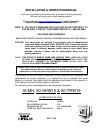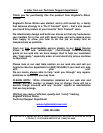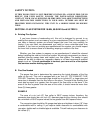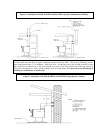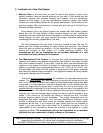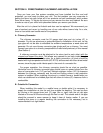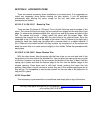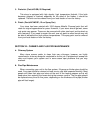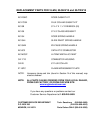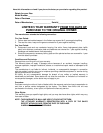SECTION II: FLOOR & WALL PROTECTION
A. Floor Protection
If your floor is constructed of a noncombustible material such as brick or concrete,
no floor protection is required. If your floor is constructed of a combustible material
such as hardwood, carpet or linoleum, you must place floor protection between the
unit and the combustible material.
There are many stove floor and wallboards on the market. You must be very
cautious in choosing the proper protection. The board must be U.L. listed. After
examining the area in which you plan to place your new unit and determining it
requires protection, the next step is to select the proper size board. The unit you
choose will determine the size board that is required. The approved board should be
large enough to provide a minimum of eight inches (8”) behind the unit, eight inches
(8”) on each side of the unit and sixteen inches (16”) in the front of it. This stove
requires a minimum 36” x 48” floor protector.
B. Wall Protection
Your stove can be placed within thirty inches (30”) of a combustible wall such as
paneling, wallpaper or drywall. In some areas local code may call for thirty-six inches
(36”) clearance from a combustible, therefore you should check to see which applies
to your area. If you need to place your unit closer it will require wall protection. There
are many wall board manufacturers, and most require a one inch (1”) air space
between the wall and the board. You can place your unit within twelve inches (12”)
of some boards and reduce your clearance by two-thirds. In addition, the wallboard
only needs to be six inches (6”) higher than the top of the stove; by placing the unit
twelve inches (12”) from a combustible, the flue pipe will be closer than eighteen
inches (18”) from a combustible surface. This will require you to use double wall or
shielded pipe that allows you to come within six inches (6”) of a combustible surface.
Regardless of clearances, we recommend using some type wall protection when
installing this unit in a mobile home or double wide. Always follow the pipe and
board manufacturer’s directions, and contact us if you have any questions.
C. Heat Shield
This stove has a standard heat shield that allows six inches (6”) clearance from
combustibles across the entire rear of the stove. You will still need thirty inches (30”)
clearance from combustibles on each side of the stove.



